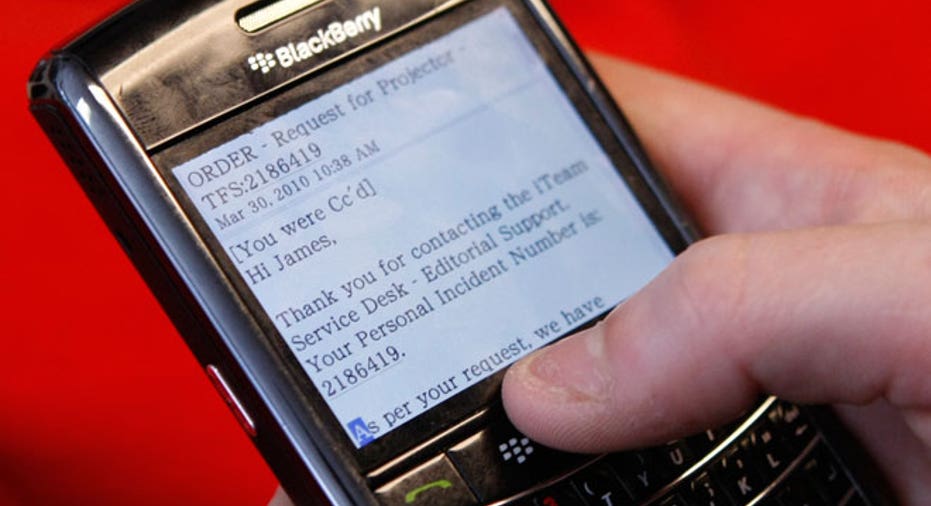To Text or Not to Text: Indeed, That is the Question

Do you send text messages?
If you’re among the vast majority of Americans who own a cell phone, the answer is probably yes.You’re likely to text here and there—on the job and off.
But if you’re between the ages of 18 and 24 years old – the answer is definitely yes. Young adults and first-job professionals send and receive more text messages than ever before. A survey released this week by The Pew Research Center found this age group averages 110 texts per day. That means they text more than 3,200 times per month!
Clearly texting is a media to reckon with. Its popularity will only grow (witness the texting behavior of a 14-year-old). Yet similar to the introduction of email decades ago and the telephone (a long time ago), texting is creeping into the workplace without guidelines and protocol. The result is often costly miscommunication that can shave away morale and productivity.
So I ask the question – to text or not to text? Here are five scenarios for you to answer:
1. To text or not to text: This morning’s staff meeting location has changed from Conference Room B to Conference Room C.
Answer: Yes. It is absolutely OK to text this information to staffers. In most cases, routine logistical and scheduling changes are pretty safe territory. On the other hand, a hasty cancellation of a critical planning meeting that featured a major presentation or decision is not OK to announce by text. In this case, meeting participants deserve a phone call or email with a more in-depth message explaining why and what’s next.
2. To text or not to text: We are closing our Richmond operations effective tomorrow.
Answer: No way. News of dramatic change, like the closing of an office, sudden departure of an executive or introduction of a new performance review program is not text material. Operational initiatives and organizational changes that tug at emotions and require new work practices should be communicated through more robust media—such as a face-to-face meeting or teleconference. Most of all, don’t shrug off the responsibility of communicating bad news. The results of sending a simplistic text will be unforgiving—to your reputation and your team’s morale.
3. To text or not to text: I’m sick today and I won’t be in.
Answer: Skip the text. An employee who can’t make it to work should contact his or her supervisor directly. This message goes beyond the fact that “I’m sick,” because there is work to be done during the absence. Step up to accountability with a phone call or detailed email that provides direction such as “Moira can tackle this task and Tye can cover this call.” You owe your manager and co-workers a game plan for moving ahead.
4. To text or not to text: This week we’re celebrating National Engineers Week with several special events.
Answer: In this instance, a text works fine. Texting is a perfect media for notifying employees about special events—planned or spontaneous. If the spirit moves to recognize team members for their extra effort, then go ahead and text the message, “Stop by the cafeteria at 2:30 p.m. today for an ice cream social of appreciation.” Generally, event notifications are safe ground – so text away.
5. To text or not to text: We won the XYZ contract. Thanks everyone!
Answer: Yes… but. It’s fine to text about a contract win, but don’t lose the opportunity to educate and engage employees. That is a priceless moment. Texting can’t rev up morale and motivation about a major accomplishment—such as a contract win or customer accolade—with the same gusto of a face-to-face meeting or video conference where you can be seen and heard.
Take Away: Texting has become a workplace fixture. But before getting overwhelmed by this new media, make the time and effort to figure out how and when texts work best. Rule of thumb: message content—not ease of use—should drive your media selection. Simple scheduling change? A text message works. Loss of a longtime customer? Make sure that news is personally delivered.
In an upcoming column, I’ll tackle the issue of generational communications. How do you get 20-somethings to actually have a conversation rather than text exchange with a 40-something boss? How do 50-somethings adapt to a text message with an under 30 employee? Tell me your story or ask a question at linda.dulye@dulye.com.
Linda Dulye is internationally recognized for helping many companies go spectator free. A former communications leader for GE and Allied Signal, Linda founded Dulye & Co. in 1998 with a practical, process-driven approach for improving communications and collaboration through an engaged workforce— a formidable competitive advantage, that she calls a Spectator-Free Workplace™.



















